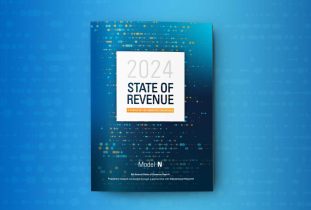Rebates can be your smartest tools to enhance revenues, improve profitability, get rid of old or excess inventory, or promote sales of particular products over others.
In this basic primer, we define the most common types of rebates, and lay out best practices of both dos and don’ts that help you ensure that your channel rebates achieve what they’re intended to do – to make more money for your business.
Defining different kinds of rebates
For high-tech manufacturers, a rebate refers to a financial incentive given to channel partners, such as distributors, resellers, or dealers, after a sale has been concluded. This differs from a discount, which is given prior to the sale. The purpose of rebates is to motivate and reward partners for their efforts in selling your products. But rebates must be managed carefully to make sure that you’re not just giving money away but achieving a financial benefit for your business. In some cases, rebates can be given to strategic customers as well.
The specific types of rebates can vary depending on the manufacturer’s strategies and goals, but here are some common types:
- Volume rebates: These rebates are offered when a partner purchases a certain volume of products. The more they buy, the higher the rebate they typically receive. This type of rebate is designed to encourage partners to purchase in larger volumes.
- Growth rebates: These are offered when a partner exceeds their sales target or achieves a specified rate of sales growth over a defined period. They are designed to stimulate sales growth.
- Performance rebates: These are tied to specific metrics or key performance indicators (KPIs), such as customer satisfaction levels, on-time delivery rates, or training completion rates. They are used to promote improved performance on the part of the partner.
- Product-specific rebates: These rebates are tied to specific products or product lines. They are often used to promote new products or to boost sales of slower-moving or older items.
- End-of-life (EOL) rebates: These rebates encourage the sale of older inventory that you are trying to move out. It’s a win-win as it helps you clear inventory while providing a discounted product for the partner to sell.
- Indirect customer rebates: Often called end-user rebates, are rebates between a supplier and an indirect customer, meaning the actual customer purchases through another entity such as a distributor, reseller or contract manufacturer. As a supplier you may want to reward or motivate specific end-user behavior despite not having a direct relationship. In this case use indirect customer rebates.
- Discount rebates (aka Ship & Debit): A classic program in high tech occurring between manufacturers and stocking distributors to manage price erosion in the channel. The manufacturer accrues debits while the distributor accrues credits. Reconciliation occurs through payment or deductions.
Note: Rebates can stack so an indirect customer rebate and discount rebate can apply to the same transaction.
Why rebates over discounts?
Although you could theoretically substitute a rebate for a discount, there are psychological factors that often make rebates more desirable. Because it is given on the back end of deals, it has a different feeling.
First, instead of simply paying less for a product upfront, your channel partner gets the pleasure of a “reward” at the end of a month or quarter, in the form of cash.
Secondly, a rebate must be earned. A discount is simply given. This puts a motivational drive into partners’ sales and marketing activities so that they get the rebate. It’s can be used as a very enticing carrot.
Best practices to keep in mind when managing rebates
Here are some best practices when managing this useful sales tool to get optimal results:
- Set clear goals and objectives: Before initiating a rebate program, clearly define what you hope to achieve. This could include increasing sales volume, promoting a new product, or boosting partner performance.
- Deploy revenue management software with a sophisticated calculation engine: This is essential for tracking sales, rebates, and partner performance. Not only does this make it easier to administer the program, but also provides valuable data to evaluate its effectiveness and make improvements over time.
- Invest in robust enablement programs: Ensure that your partners know what to sell, how to sell, and how to make money from your rebate programs. This can involve providing training or compiling FAQs to help partners to perform as you want them to.
- Communicate clearly and regularly: Make sure that your channel partners understand the terms and conditions of your rebate programs. Provide regular updates on the status of rebates and any changes to the program. Your revenue management software should also be able to automate communications. For example, if you are changing a key provision for a rebate starting in the next quarter, you need to communicate that clearly to perhaps 2,000 partners. This can be difficult. An intelligent system that can help you do this by actively creating and updating the rebate program letters even as you change the program.
- Ensure easy claim process: The process of claiming rebates should be simple and straightforward for your channel partners. If the process is too complicated, it could discourage participation in the program.
- Continuously review and adjust: Regularly review the effectiveness of your rebate programs and make adjustments as necessary. This could mean changing the rebate amounts, adding or removing products, or modifying the goals.
Here are some things to remember to NOT do when managing rebates and other B2B incentives:
- Don’t operate in a silo: If you are creating rebates in a disconnected organization, in which pricing doesn’t know what marketing or sales is doing, you run the risk of not getting the results you want – instead of increasing margin you could actually be losing money.
- Don’t overcomplicate it: While it can be beneficial to offer a variety of rebate types, avoid making your program so complex that it’s difficult for partners to understand or for you to administer. One good rule of thumb is keeping things in relative proportion: the complexity of the program should match the complexity of the desired behavior.
- Don’t overpromise: Be realistic about what you can offer in rebates and ensure you’re able to deliver on your promises. Overpromising can lead to disappointment and a loss of trust.
- Don’t forget about compliance: Ensure your rebate programs comply with all relevant laws and regulations. This may include laws related to advertising, competition, and taxation. For example, the SEC demands that you recognize revenue net of rebates – taking into account that money needs to be paid out at the end of a period – so you don’t overinflate your earnings. Otherwise, the fines can be steep.
- Don’t favor some partners over others: While you might have closer relationships with certain partners, it’s important to offer fair and equal opportunities to all. Not doing so could lead to dissatisfaction and even legal action.
- Don’t set and forget: A rebate program isn’t something you can set up and then ignore. It requires ongoing management, communication, and review. Your pricing management solution should have sophisticated analytics and dashboards that allow you to precisely track how your various rebate programs are performing, to help you fine tune them and optimize your margins. You should be able to think about your programs as a form of R&D – you try different tactics to see what works best.
When offering rebates, visibility (and data) is everything
Remember, the success of rebate programs relies heavily on the relationships with your channel partners. Trust, transparency, and ongoing communication are key – but especially transparency. That’s where your solution provider becomes all-important. Traditionally, companies like yours had no visibility into who was selling what to whom. Now all that can be viewed in real time, leading to more immediate insights and feedback on programs, and the ability to make better decisions in more timely manner.
Managing high-tech manufacturing rebates can be complex, given the various types of rebates and the multiple partners involved. However, if done right, they can be a highly effective part of your channel partner strategy.
To learn more in this area be sure to register to the upcoming Masterclass on “5 Do’s and Don’ts of When Considering Rebates Programs”
If you are looking to learn more about actively managing incentives to optimize revenue and channel compliance please set up some time with us.
















